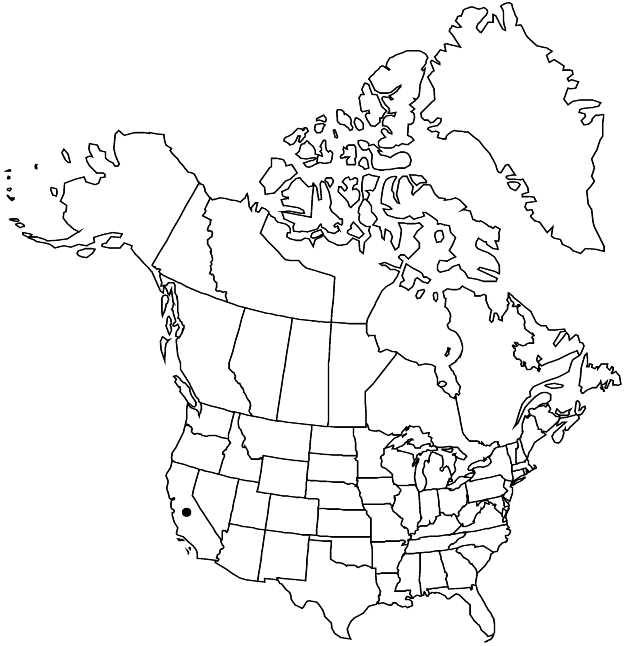Difference between revisions of "Eriogonum fasciculatum var. flavoviride"
Bull. Torrey Bot. Club 49: 350. 1923.
FNA>Volume Importer |
FNA>Volume Importer |
||
| Line 12: | Line 12: | ||
|name=Eriogonum fasciculatum subsp. flavoviride | |name=Eriogonum fasciculatum subsp. flavoviride | ||
|authority=(Munz & I. M. Johnston) S. Stokes | |authority=(Munz & I. M. Johnston) S. Stokes | ||
| + | |rank=subspecies | ||
}} | }} | ||
|hierarchy=Polygonaceae;Polygonaceae subfam. Eriogonoideae;Eriogonum;Eriogonum subg. Eucycla;Eriogonum fasciculatum;Eriogonum fasciculatum var. flavoviride | |hierarchy=Polygonaceae;Polygonaceae subfam. Eriogonoideae;Eriogonum;Eriogonum subg. Eucycla;Eriogonum fasciculatum;Eriogonum fasciculatum var. flavoviride | ||
| Line 27: | Line 28: | ||
|elevation=50-1300 m | |elevation=50-1300 m | ||
|distribution=Calif.;Mexico (Baja California;Sonora). | |distribution=Calif.;Mexico (Baja California;Sonora). | ||
| − | |discussion=<p>Variety flavoviride is a widespread, infrequent to common, warm-desert shrub found on the Mojave and Sonoran deserts in southern San Bernardino, Riverside and San Diego counties. The yellowish-green hue of the flowering stems, inflorescence branches, and leaves readily distinguish it from < | + | |discussion=<p>Variety flavoviride is a widespread, infrequent to common, warm-desert shrub found on the Mojave and Sonoran deserts in southern San Bernardino, Riverside and San Diego counties. The yellowish-green hue of the flowering stems, inflorescence branches, and leaves readily distinguish it from <i></i>var.<i> polifolium</i>, with which it occasionally occurs (especially in Mexico), although this feature is not always obvious on herbarium specimens. Variety flavoviride is much more attractive in the garden than its more frequently planted Mojave Desert counterpart. Reports (e.g., R. S. Felger 2000) of <i></i>var.<i> fasciculatum</i> along the coast in extreme northwestern Sonora are based on specimens of <i></i>var.<i> flavoviride</i>.</p> |
|tables= | |tables= | ||
|references= | |references= | ||
| Line 36: | Line 37: | ||
-->{{#Taxon: | -->{{#Taxon: | ||
name=Eriogonum fasciculatum var. flavoviride | name=Eriogonum fasciculatum var. flavoviride | ||
| − | |||
|authority=Munz & I. M. Johnston | |authority=Munz & I. M. Johnston | ||
|rank=variety | |rank=variety | ||
| Line 51: | Line 51: | ||
|publication year=1923 | |publication year=1923 | ||
|special status= | |special status= | ||
| − | |source xml=https://jpend@bitbucket.org/aafc-mbb/fna-data-curation.git/src/ | + | |source xml=https://jpend@bitbucket.org/aafc-mbb/fna-data-curation.git/src/f50eec43f223ca0e34566be0b046453a0960e173/coarse_grained_fna_xml/V5/V5_589.xml |
|subfamily=Polygonaceae subfam. Eriogonoideae | |subfamily=Polygonaceae subfam. Eriogonoideae | ||
|genus=Eriogonum | |genus=Eriogonum | ||
Revision as of 21:55, 16 December 2019
Shrubs or subshrubs, rounded and somewhat compact, 2–5 × 3–6(–10) dm, thinly floccose or glabrous, yellowish green. Aerial flowering stems usually glabrous. Leaf blades linear or linear-oblanceolate, 0.6–1 × 0.05–0.2 cm, thinly tomentose to subglabrous and light green abaxially, subglabrous or glabrous and green adaxially, margins tightly revolute. Inflorescences mostly capitate; branches glabrous. Involucres turbinate-campanulate, 2–3 × 2–3 mm, glabrous or subglabrous. Perianths glabrous or infrequently thinly pubescent. 2n = 40.
Phenology: Flowering year-round.
Habitat: Sandy to gravelly flats and slopes, saltbush and creosote bush communities, pinyon-juniper woodlands
Elevation: 50-1300 m
Distribution

Calif., Mexico (Baja California, Sonora).
Discussion
Variety flavoviride is a widespread, infrequent to common, warm-desert shrub found on the Mojave and Sonoran deserts in southern San Bernardino, Riverside and San Diego counties. The yellowish-green hue of the flowering stems, inflorescence branches, and leaves readily distinguish it from var. polifolium, with which it occasionally occurs (especially in Mexico), although this feature is not always obvious on herbarium specimens. Variety flavoviride is much more attractive in the garden than its more frequently planted Mojave Desert counterpart. Reports (e.g., R. S. Felger 2000) of var. fasciculatum along the coast in extreme northwestern Sonora are based on specimens of var. flavoviride.
Selected References
None.